A case study of changes the YouTube web team made to improve performance, increase their Core Web Vitals pass rates and lift key business metrics.
The Chrome team often talks about "building a better web", but what does that mean? Web experiences should be fast, accessible, and use device capabilities in the moment when users need it most. Dogfooding is part of Google's culture, so the Chrome team has partnered with YouTube to share lessons learned along the way in a new series called, "Building a better web". The first part of the series will dive into how YouTube built a faster web experience.
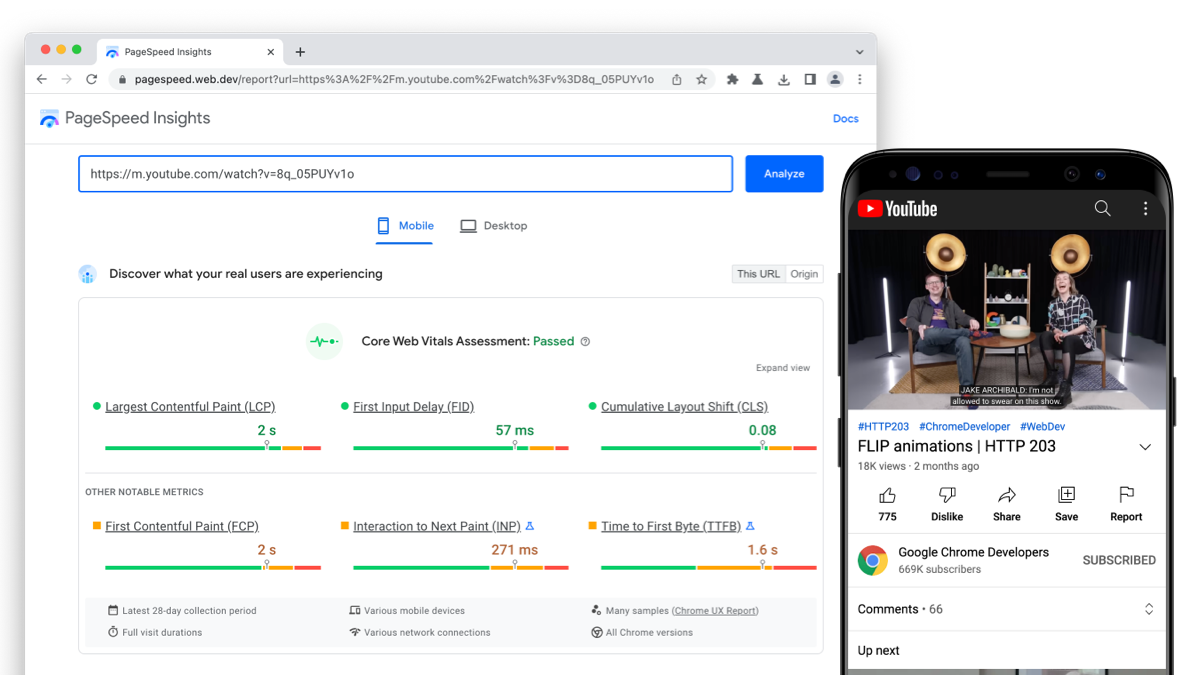
At YouTube, performance relates to how fast videos and other content—such as recommendations and comments—load on web pages. Performance is also measured by how quickly YouTube responds to user interactions such as search, player control, likes, and shares.
Growing developing markets, such as Brazil, India, and Indonesia are important for YouTube mobile web. Because many users in these regions have slower devices and limited network bandwidth, ensuring a fast and seamless experience is a critical goal.
To provide an inclusive experience for all users, YouTube set out to improve performance metrics such as Core Web Vitals through lazy-loading and code modernization.
Improve Core Web Vitals
To identify areas of improvement, the YouTube team used the Chrome User Experience Report (CrUX) to see how real users were experiencing video watch and search result pages on mobile in the field. They realized their Core Web Vitals metrics had a lot of room for improvement, with their Largest Contentful Paint (LCP) metric clocking in at 4-6 seconds in some cases. This was substantially higher than their target of 2.5 seconds.
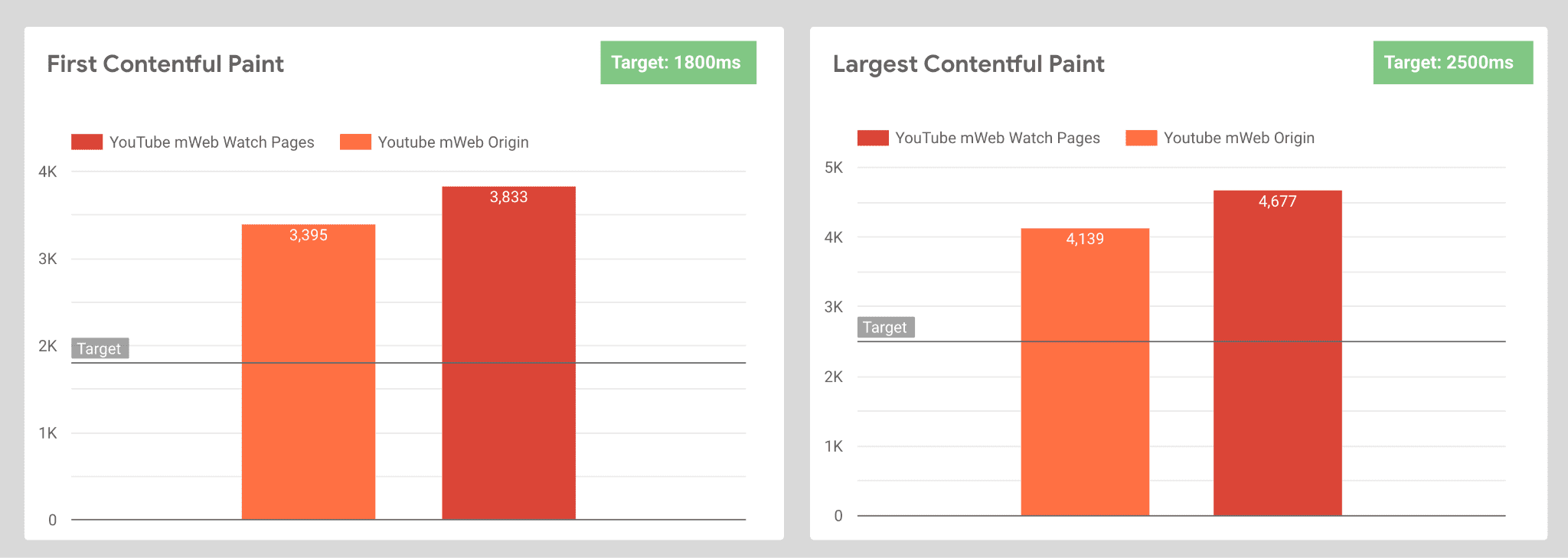
To identify areas for improvement, they turned to Lighthouse to audit the YouTube watch pages, revealing a low Lighthouse (lab) score with a First Contentful Paint (FCP) of 3.5 seconds and a LCP of 8.5 seconds.
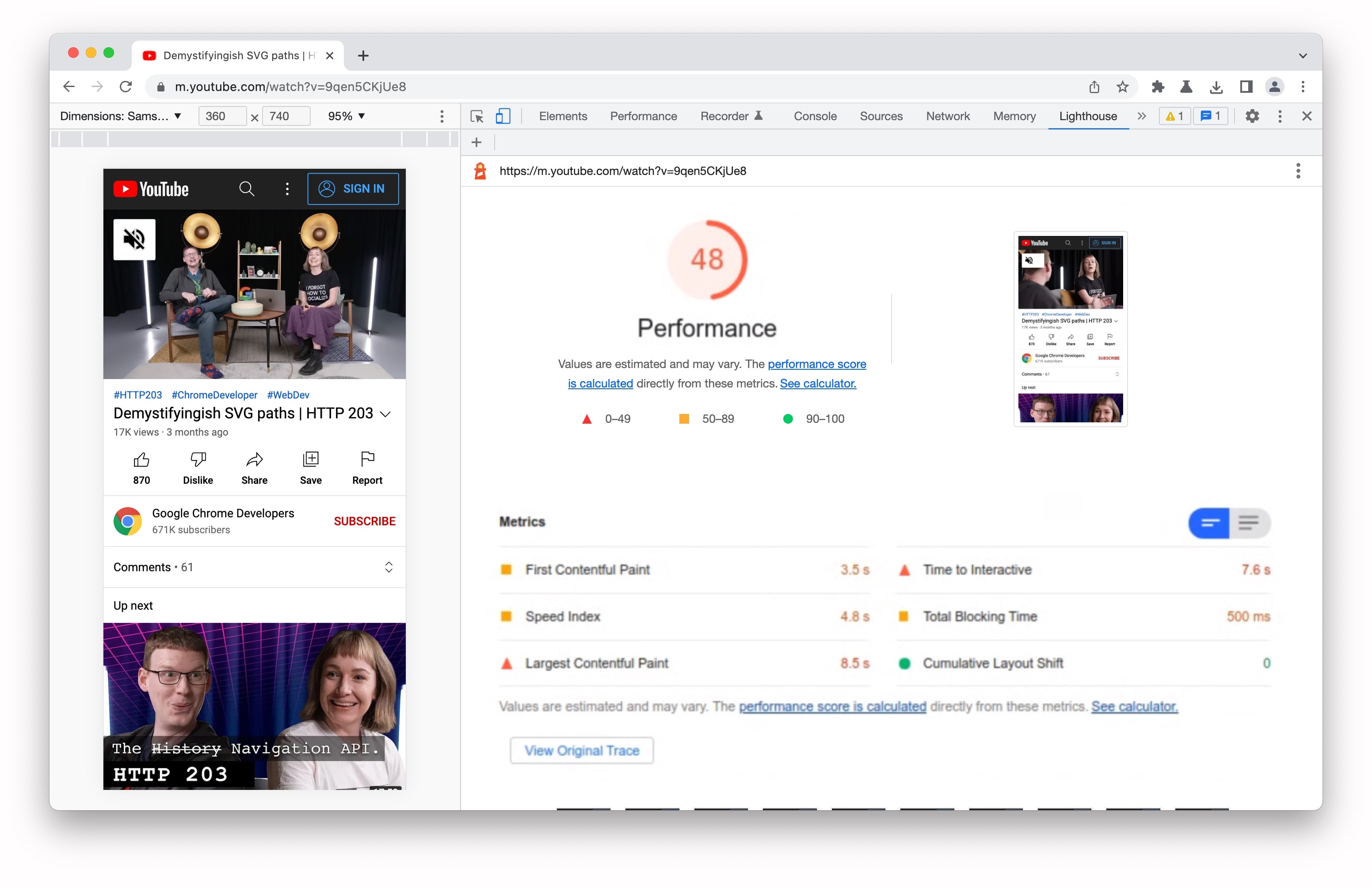
To optimize FCP and LCP, the YouTube team dove into several experiments, resulting in two big discoveries.
The first discovery was that they could improve performance by moving the HTML for the Video Player above the script that makes the Video Player interactive. Lab tests indicated that this could improve both FCP and LCP from 4.4 seconds to 1.1 seconds.
The second discovery was that LCP only considers
<video>element poster images and not frames from the video stream itself. YouTube has traditionally optimized for the fastest time until the video starts playing, so to improve LCP the team started also optimizing how quickly they could deliver their poster image. They experimented with a few variations of poster images and picked the one that scored the best in user testing. As a result of this work, both FCP and LCP showed marked improvement, with field LCP improving from 4.6 seconds to 2.0 seconds.
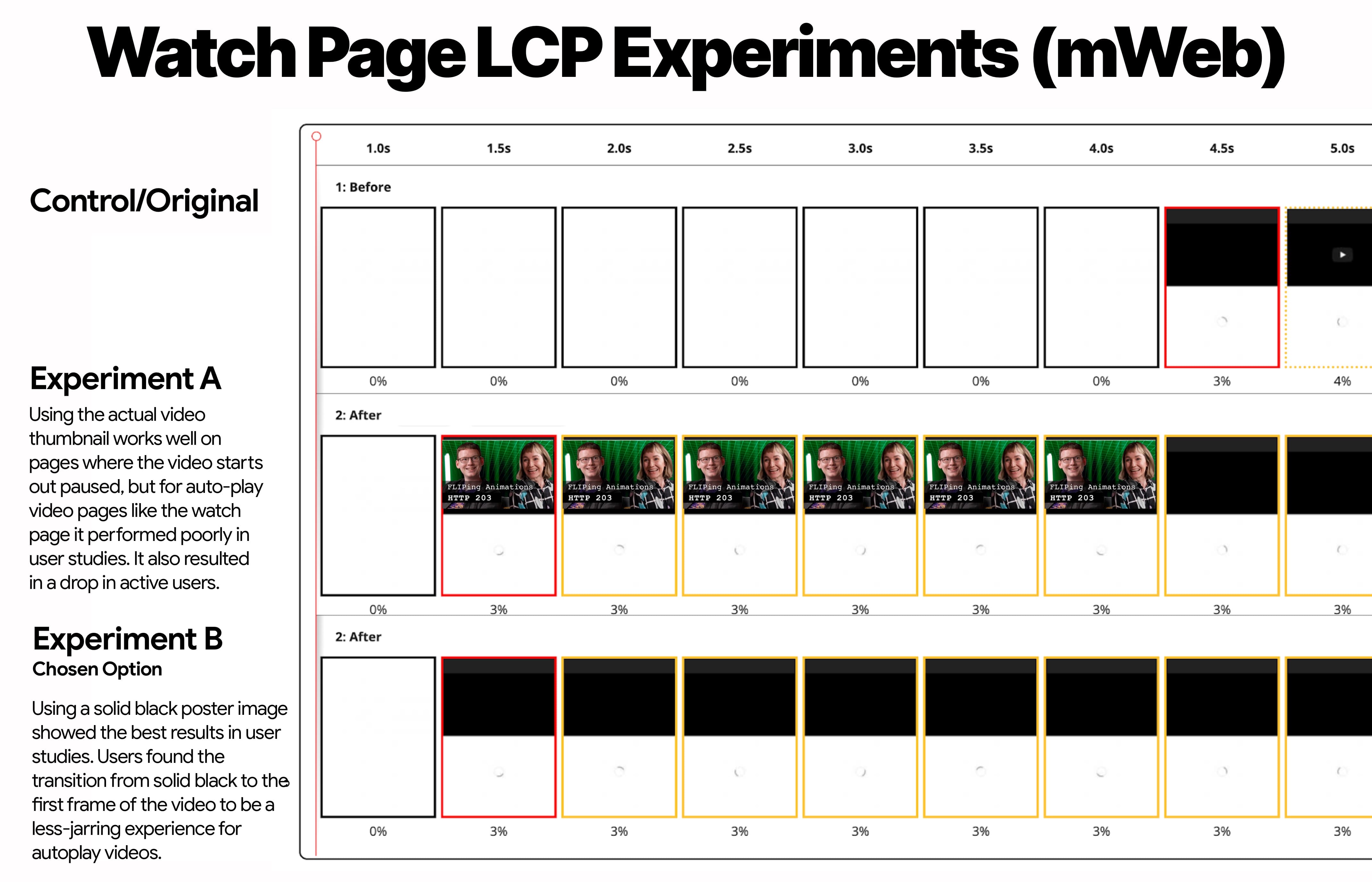
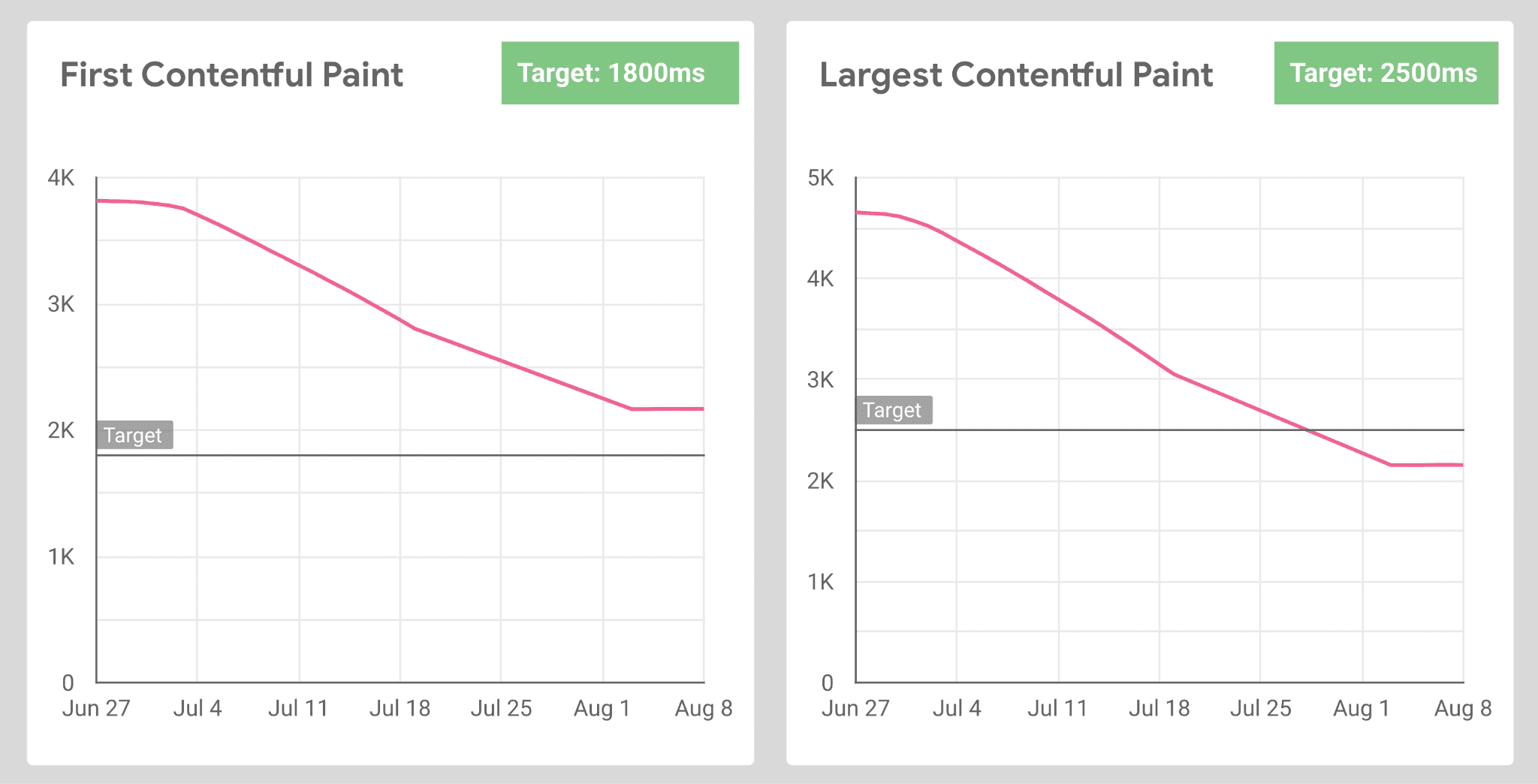
While these optimizations did improve LCP, the team felt that the current definition of the LCP metric wasn't fully capturing, from the user's perspective, when the "main content" of the page had loaded—which is the goal of LCP.
To address these concerns, members of the YouTube team partnered with members of the Chrome team to explore ways that the LCP metric could be improved to address their use case. After considering the feasibility and impact of a few options, the teams landed on a proposal to consider the paint time of the first frame of a video element as an LCP candidate.
Once this change lands in Chrome, the YouTube team is excited to continue their work optimizing for LCP. And the updated version of the metric will mean these optimizations will have a more direct impact on real-user experiences.
Modularization with lazy loading
YouTube pages contained many modules that were eagerly loaded. To optimize how 50+ components were rendered, the team built a component to JS module map that would tell the client which modules to load. By marking components as lazy, the JS modules would load later, reducing the initial load time of the page and the amount of unused Javascript sent to the client.
However, after lazy loading was implemented, the team noticed a waterfall effect that lazy loaded components and their dependencies would load at suboptimal times.
To solve this problem, the team determined the minimal set of components needed in a view and batched them in a single network request. The results were improved page speed, reduced JavaScript parse time, and, ultimately, better initial rendering times.
State-management across components
YouTube was experiencing performance issues due to its player controls, especially on older devices. Code analysis showed that the player, which allows users to control features such as playback speed and progress, had become over-componentized over time.
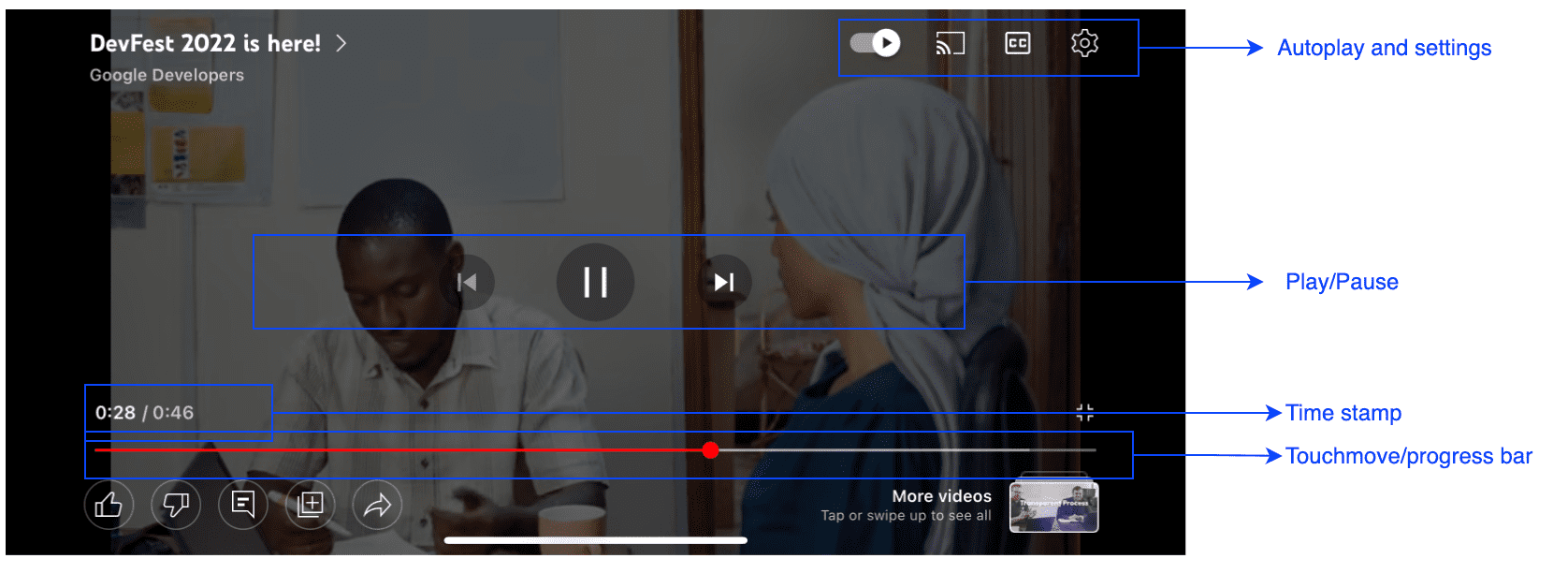
Each progress bar touch-move event triggered two extra style recalculations and took 21.17 ms during performance test runs in the lab. As new controls were added over time, the pattern of decentralized control would often cause circular dependencies and memory leaks, negatively impacting watch page performance.

To fix the issues due to decentralized control, the team updated the player UI to synchronize all updates, essentially refactoring the player to one top-level component that would pass down data to its children. This ensured only one UI update (render) cycle for any state change, eliminating chained updates. The new player progress bar touch-move event has no style recalculations during its JavaScript execution and now only requires 25% the time of the old player.

This code modernization also resulted in additional performance improvements such as improved watch load times on old devices, fewer abandoned playbacks, and a reduced number of non-fatal errors.
Results and optimizations
As a result of YouTube's investment in performance, watch pages load much faster with 76% of YouTube's mobile website URLs now passing Core Web Vitals metric thresholds in the field. On desktop, lab LCP for the watch page was reduced from approximately 4.6 seconds to 1.6 seconds. Interaction and rendering performance of the site, especially on the YouTube video player, are seeing up to 75% less time spent in JavaScript execution than before.
Improvements to the performance of YouTube web over the last year have also improved business metrics, including watch time and daily active users. Based on the success of these efforts, we plan to continue exploring even more ways to optimize in the future.
With special thanks to Gilberto Cocchi, Lauren Usui, Benji Bear, Bo Aye, Bogdan Balas, Kenny Tran, Matthew Smith, Phil Harnish, Leena Sahoni, Jeremy Wagner, Philip Walton, Harleen Batra and both the YouTube and Chrome teams for their contributions to this work.


